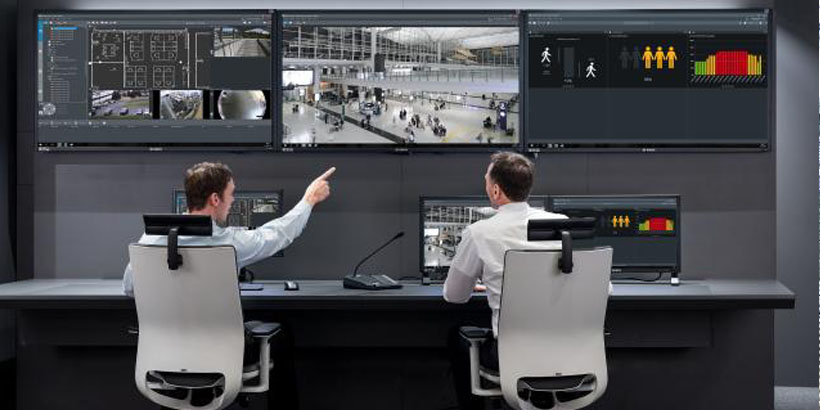The evolution of video surveillance in recent years has been staggering, both in terms of the pace of change and the depth of functionality which is now available. The core features of any video surveillance system have always been the ability to capture, store and allow the search and replay of footage. These remain pivotal to the success of any video system. However, in the past, these features were pretty much all that most users expected from their investment in video technology.
Today’s solutions have the ability to not only capture and record video streams, but also to interrogate the video to identify and capture a wide range of specific information. The typical approach was for video to be reviewed by an operator after an incident. Often they would have to scrub through hours of video, channel by channel, to try and find footage which identified a perpetrator, or which provided details about how an incident had unfolded.
Video surveillance was very good at capturing images from a scene, even if light levels were harsh or conditions were not ideal. However, it was very much reliant on an operator to find activity of interest, to identify individuals or to make sense of what was occurring. This labour-intensive approach was part of the reason that other information captured by the video system was not used for business management or trend monitoring; the required human resources required were too costly.
Thankfully, advances in processing power, coupled with the growth of smart technologies, allow today’s video surveillance systems to capture, filter and make sense of so much more information. Systems can assess video footage, identify if vehicles and/or people are moving in the images, gather information about the direction and speed of travel, the colour and size of the target, spot exceptional behaviours, detect complex scenarios and trigger a wide range of actions based upon what is happening in real-time.
The use of metadata – literally data about data – has allowed a sea-change in how video technology can benefit businesses and organisations. As well as supporting business intelligence, building management, core business activities, health and safety and situational decision-making, the latest video systems also offer a higher level of security – in terms of accuracy and resilience – than was ever before possible.
Maximising the potential from video solutions has become possible thanks to the evolution of advanced software-based video management systems. One example of this is BVMS 10.1 from Bosch.
BVMS 10.1 is a modular and resilient security system designed to aggregate and deliver consolidated data to security operators to help them make the right decisions to deploy a swift response to any events or incidents. It can also automate responses to defined situations, both for security and safety purposes, as well as for building management or business intelligence gathering.
BVMS combines data from various sources to allow seamless integration with access and intruder detection. Interactions with these other systems can be handled directly within BVMS, delivering a unified interface to simplify operations. Integrations also enhance security as an event in one system can trigger a reaction in another. If, for example, a door is forced open, the video system can start recording video streams from that door. If the video analytics in an intelligent camera detects overcrowding, doors can be automatically unlocked to provide additional exits.
Security investigations can require the collection of evidence from archived footage, not only going back days or weeks, but also across multiple cameras on a site, or even multiple sites. Historically this has been a labour-intensive tasks which stretches resources for many users. However, BVMS, features an enhanced Forensic Search capability which allows operators to retrieve the right footage from hours of stored video instantly. It does this by analysing the video content based upon a range of inputted criteria.
Enhanced Forensic Search allows search pre-sets to be saved, speeding up the search process and making it more efficient by enabling operators to adjust and enhance previous searches. BVMS offers smart interactions between the Forensic Search function, the timeline and the playback image pane within the same intuitive dashboard. This eliminates the need for operators to switch between different windows.
Search results are clickable, triggering recorded video sequences to be displayed in the playback pane. BVMS also generates a table of search results that operators can click through without having to scroll through the timeline.
BVMS functionality can be extended with ‘Intelligent Insights’. The data management software aggregates and visualises metadata of one or multiple cameras in intuitive widgets. It allows operators to view data such as the number of counted objects (people or cars) within a time period, the movement of objects, the formation of crowds or the fill-level of an area. Data is visualised in real time, allowing users to evaluate information and gain an awareness of the situation and context. Intelligent Insights completes the metadata journey from scene to screen and presents it in a way that is simple to read, easy to interpret, and fast to act on.



